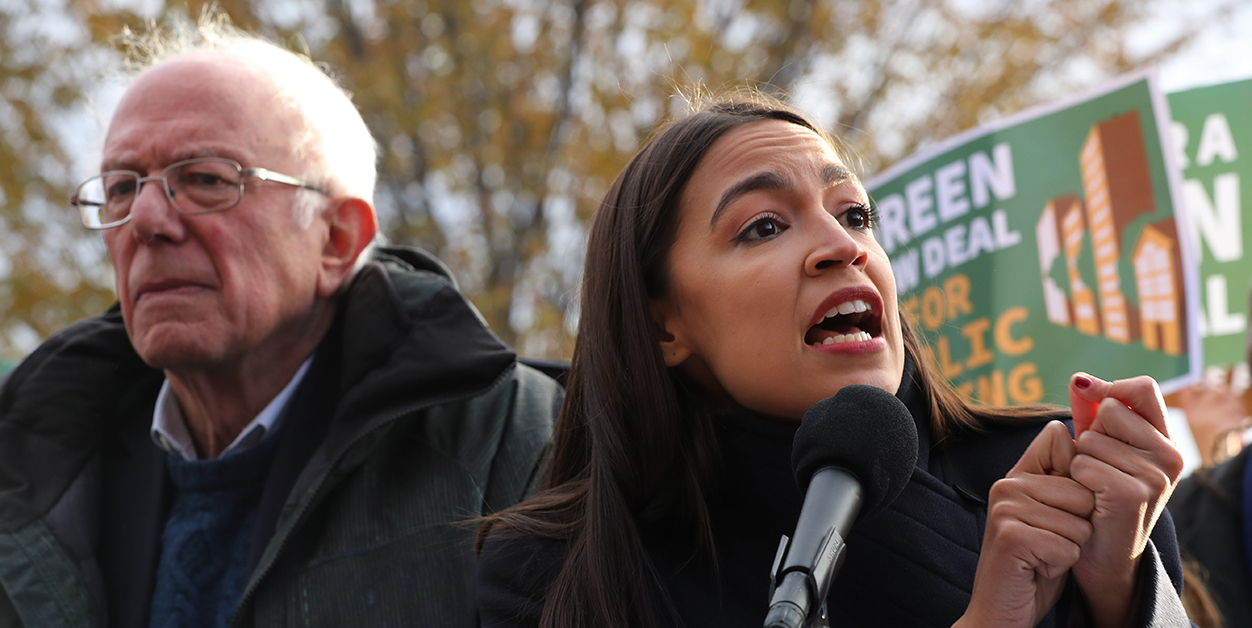“Decommodifying” the nation’s rental housing is a hot topic in left-wing circles. The argument, essentially, is this: Housing should not be commodified through market mechanisms but rather treated as a universal human right.
To that end, Rep. Alexandria Ocasio-Cortez (D - N.Y.) has proposed “A Place to Prosper Act,” which includes a national cap on annual rent increases, a prohibition on evictions without just cause, and a right to counsel for tenants facing eviction.
Not to be outdone, Sen. Bernie Sanders (I - VT) has proposed a “Housing for All” plan that also includes national rent controls, “just cause” limits on evictions, and legal assistance for households facing eviction. It would also repeal the Faircloth Amendment, which limits construction of new federally-funded public housing.
As The Nation wrote recently, decommodifying housing, “will require both protecting tenants and restricting the profits of developers and real estate groups.” While all who favor decommodification favor limiting landlords’ profits, none can adequately answer the question of who, once the battle is won, is actually going to pay to maintain rental housing.
None of these proposals take into account the reality on the ground for rental-unit owners. Real estate has a life cycle: property depreciates, the building will need reinvestment, and that reinvestment enables owners to raise rents. By reinvesting in the building, housing is kept occupiable and affordable for longer periods of time.
A 2016 study published by scholars at the Hudson Institute, for example, looked at units that, in the period between 1985 and 2013, were affordable to “very low income” households as defined by the U.S. Department of Housing and Urban Development. Of the units that provided such affordable rental housing, about 20% were affordable at least 80% of the time. Two-thirds of the units that were affordable at some time in the period were affordable between 20% and 80% of the time. When such units were not “affordable,” they were owner-occupied or rented for higher rents. It’s likely that at these times, the units experienced reinvestment.
“Decommodification” advocates prioritize protecting incumbent tenants from rent increases they may not be able to pay over allowing this market-driven life cycle of housing deterioration and upgrading – and its corresponding rent changes -- to play out. Consequently, many rent-controlled units would never see rent increases large enough to support private reinvestment. Over time, such units would deteriorate and might become unlivable.
Senator Sanders is sensitive to this point. His plan would cap rent increases at 3%, or 1.5 times the rate of inflation, but allow landlords “waivers if significant capital improvements are made.” It’s not clear how these waivers square with his promise to protect tenants. However, he would allow localities to enact “even stronger” rent controls; these apparently do not need to provide such waivers.
Yet the contradictions in Sen. Sanders’ plan reveal the fundamental flaws in the “decommodification” movement. Whether one’s housing gets reinvestment shouldn’t depend on how enlightened one’s local government is about the imperatives of private ownership. Once stripped of its value as an income-producing asset, housing becomes a very expensive drain on somebody’s cash flow. Abolishing all incentives for investment doesn’t change the fact that the money that gets spent to maintain the building first has to come in as revenue or debt that needs to be repaid.
The U.S. has real housing affordability issues. According to Harvard’s Joint Center for Housing Studies, in 2017 10.8 million of the nation’s 43.8 million renter households were severely cost-burdened (paying more than 50% of income for housing). An additional 9.7 million were moderately cost-burdened (paying more than 30% but less than 50%). Severely cost-burdened households were concentrated below $30,000 in income. Moderately cost-burdened households were spread through a greater range of incomes, up to $75,000.
However, direct or indirect efforts to give low-income renters more cash for housing exacerbates the housing supply crunch in high-cost coastal metropolitan areas, where rent-burdened households are concentrated. These subsidies simply boost demand, causing more dollars to chase the same limited supply of housing and ultimately pushing up prices. It’s the job of state and local governments to make sure local housing supply matches housing demand. In the high-cost metros, the housing shortfall is often exacerbated by zoning policies that stifle new construction.
Americans at all income levels would be better served if the “decommodification” movement were to turn its state and local activism away from rent control and public ownership toward replacing restrictive zoning with a framework that genuinely provides housing for all.
Mr. Kober is an adjunct fellow at the Manhattan Institute. He retired in 2017 as director of housing, economic and infrastructure planning at the New York City Department of City Planning.
Interested in real economic insights? Want to stay ahead of the competition? Each weekday morning, e21 delivers a short email that includes e21 exclusive commentaries and the latest market news and updates from Washington. Sign up for the e21 Morning eBrief.
Photo by Chip Somodevilla/Getty Images
